Sony HT-AX7 hands-on review: take the cinema with you
Compact spatial sound you can take (just about) anywhere
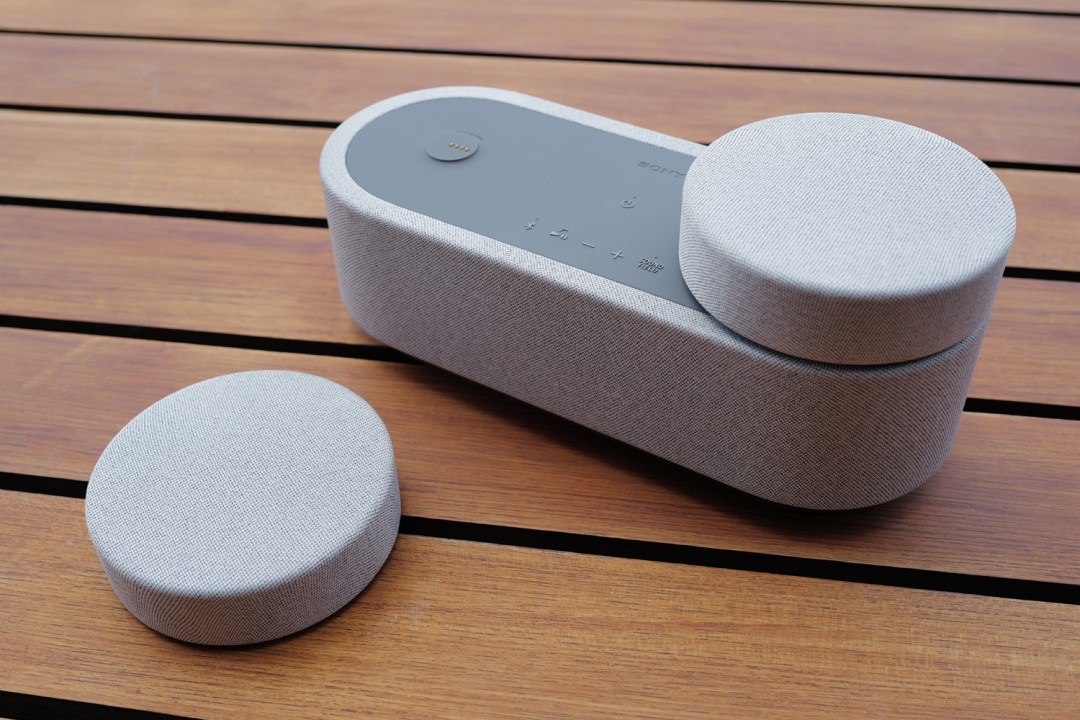
Nothing beats the head rattling, bass pounding immersion of watching movies in surround sound, whether at the cinema or using some of the best home theatre kit money can buy. But let’s face it, these days we probably spend more time glued to YouTube on our phones and tablets than we do parked in front of the telly or projector bingeing on Netflix. That’s no reason to neglect spatial audio, though: the HT-AX7 wants to put spatial audio just about anywhere, courtesy of detachable rear satellites.
Sony’s latest compact theatre system (whatever you do, don’t call it a Bluetooth speaker) won’t replace your soundbar or surround sound system – but it’ll give your portable device a convincing spatial audio upgrade, without having to tether to a plug socket. Or at least that’s the theory. After getting some hands- and ears-on time with it ahead of the official reveal, here’s how we think it stacks up.
Design & build: pop your top


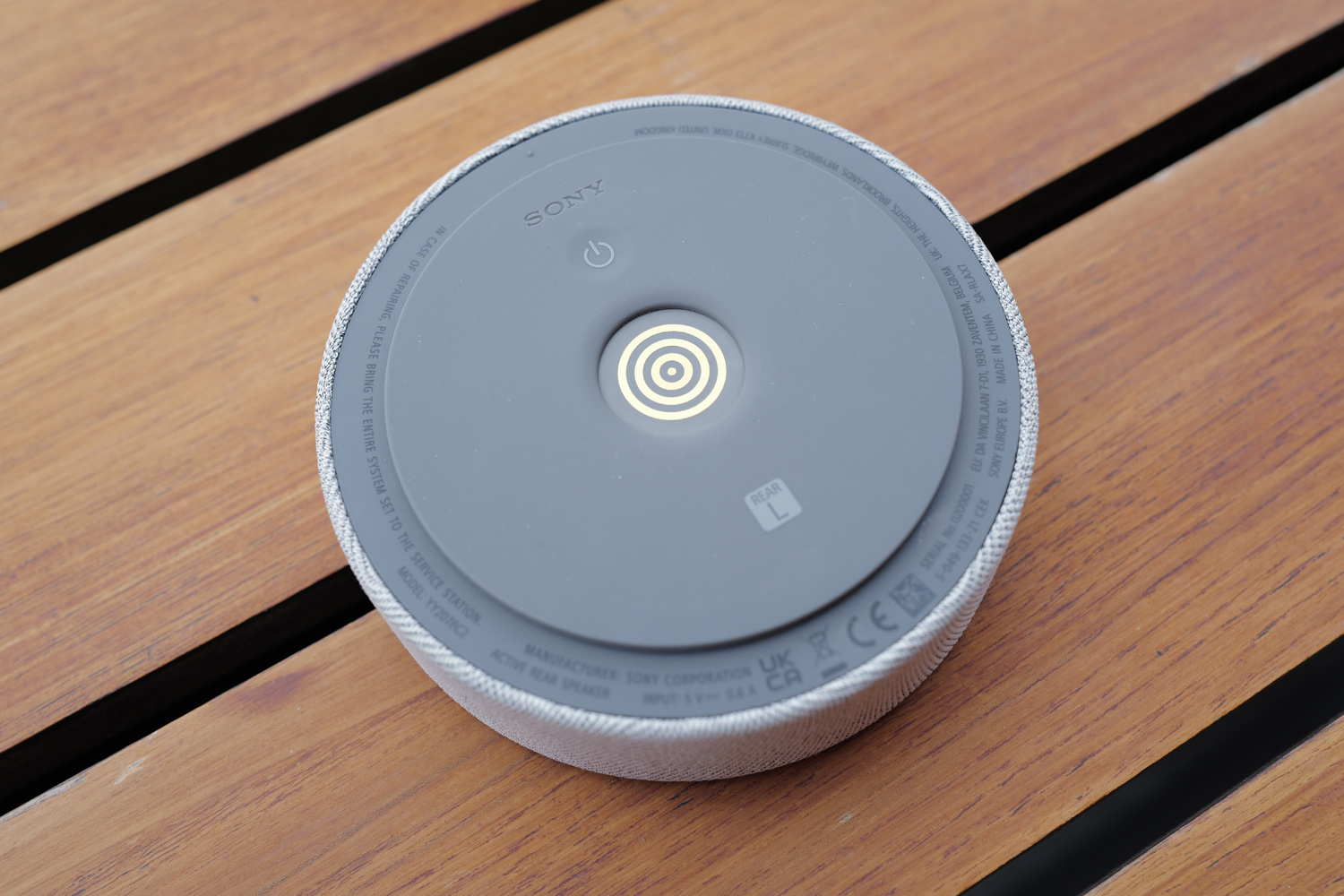
Even wrapped in innocuous grey fabric (made from recycled PET plastic bottles, don’tcha know), the HT-AX7 is a unique looking speaker. Two puck-shaped satellites perch on top of the tubular main unit, with a bunch of physical controls sandwiched in between. The layout reminds us a bit of Mickey Mouse’s head. Perhaps that’s why Sony won’t be selling one in black.
There’s a single upward-firing driver inside each satellite, so they’re best placed around shoulder height, but will help create a surround sound effect even if you place them lower. The main unit uses two of Sony’s X-balanced speaker drivers, which fire forwards, and two side-angled passive radiators. Putting it in front of you, on a coffee table or desk, will give the best performance.
This is a fairly hefty Bluetooth speaker, despite the modest footprint, but is still perfectly portable. Bases made of thick rubber on both the main unit and the satellites help dampen vibrations, and a similar treatment on top keeps smudgy fingerprints at bay. You can easily take it outdoors, but with no IP rating you’ll have to dash it inside again if the heavens open.
Each satellite sits on a magnetic charging plate, and can be popped off with minimal effort. It’s a cinch to line them back up when you’re done listening, too. Subtle LEDs let you know when they’re powered on or charging. They’re left- and right-specific, so the main unit will beep at you if you plonk them down on the wrong side.
Features & battery life: sound all around
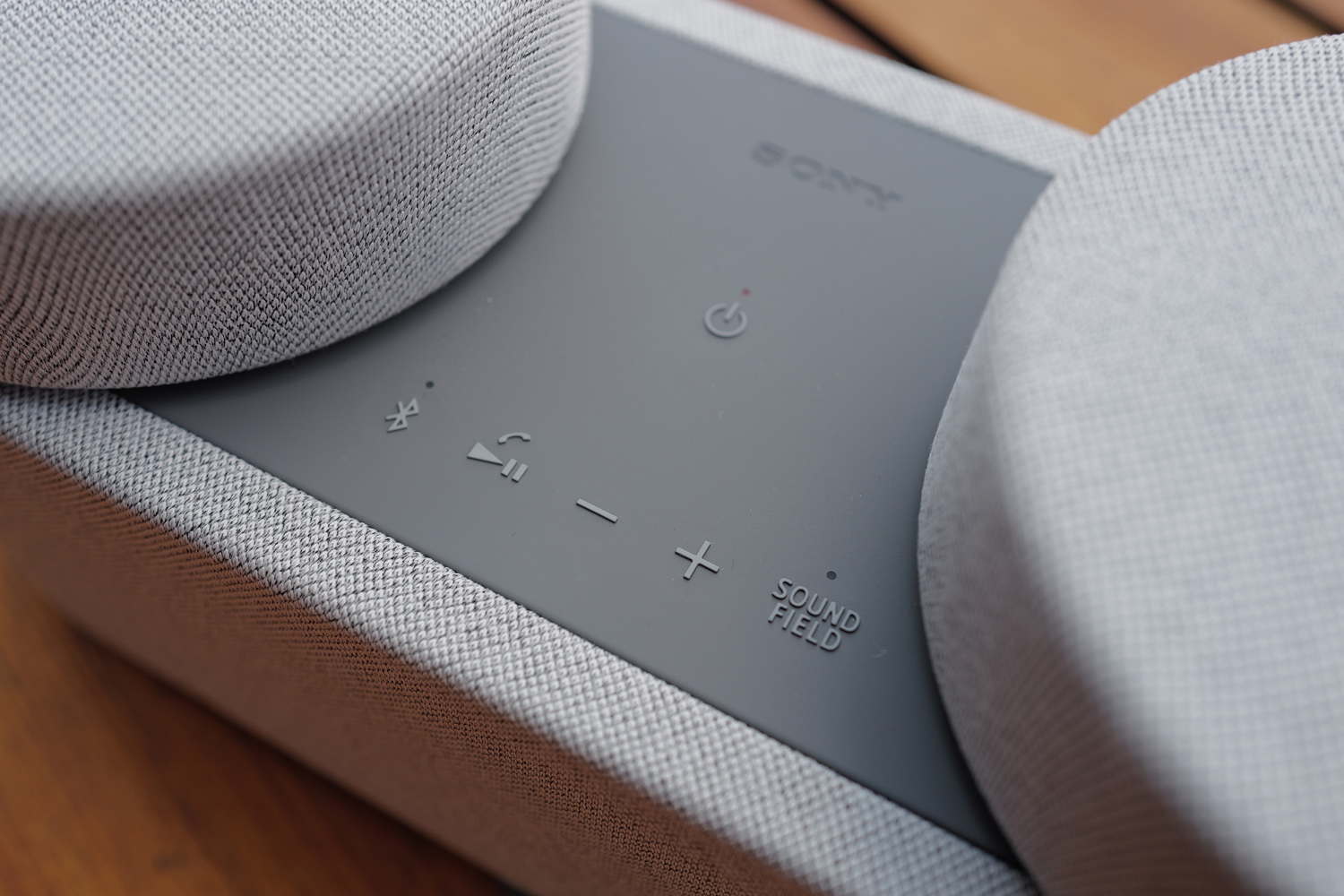
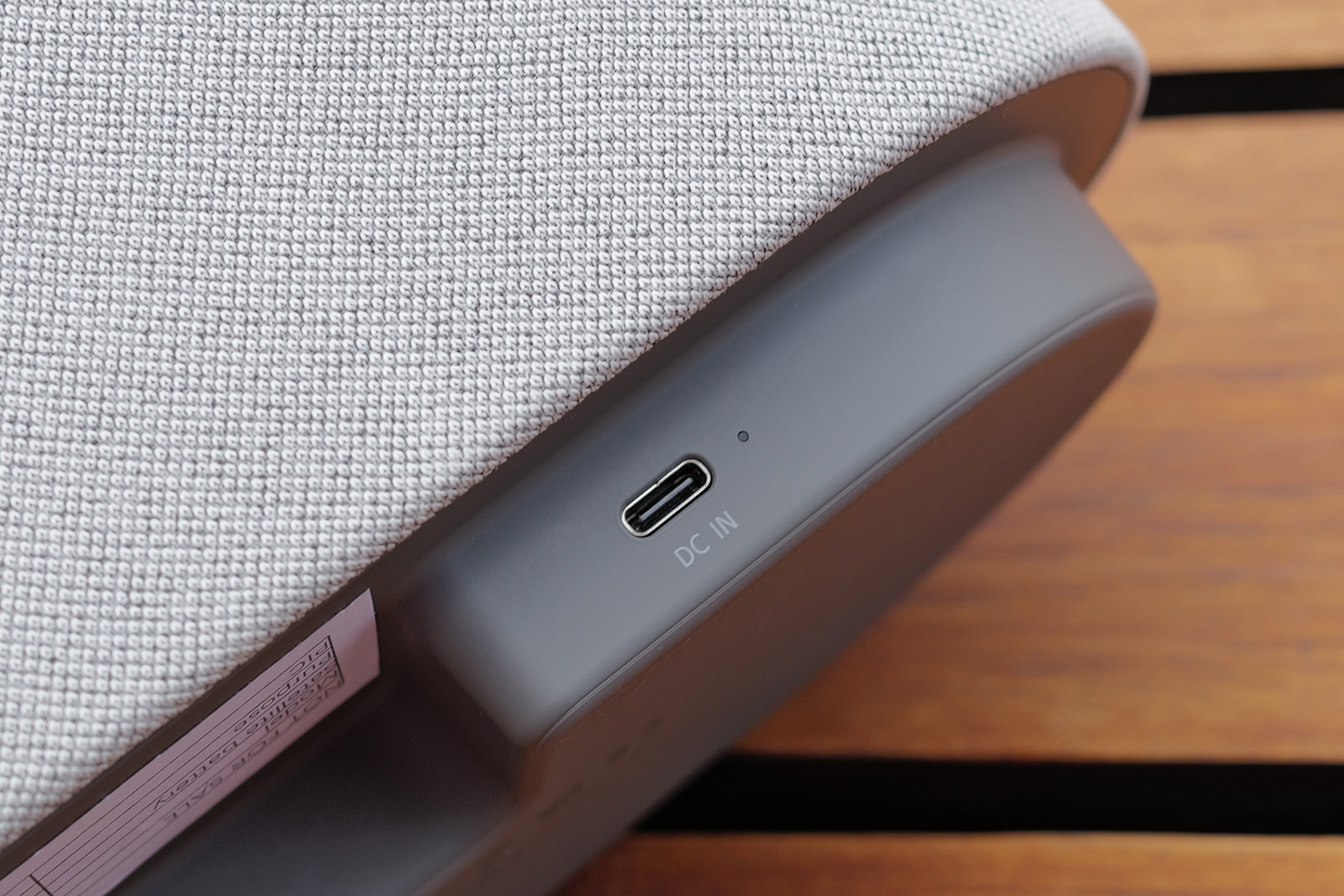
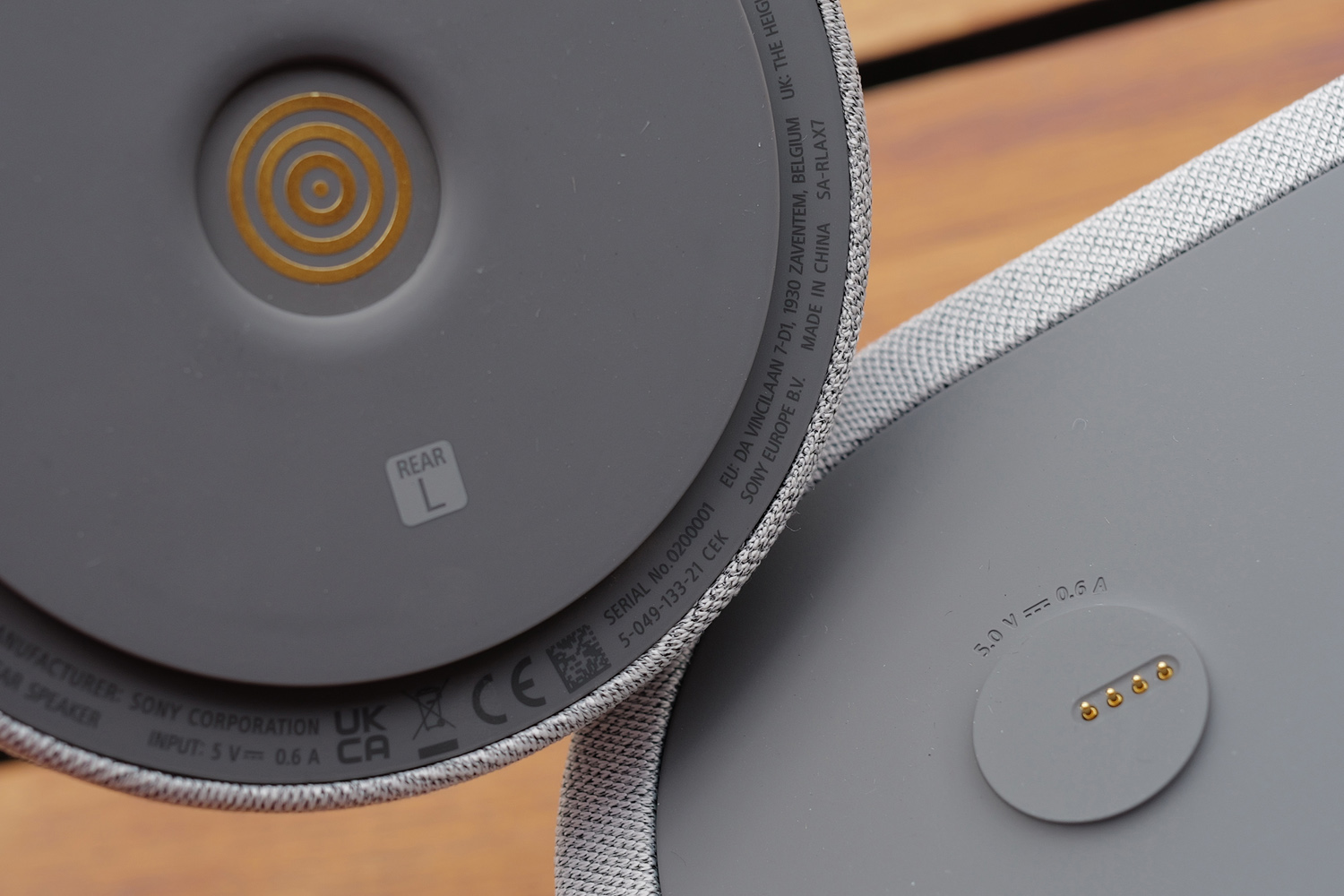
Surprisingly for a speaker that’s all about spatial sound, the HT-AX7 relies exclusively on Bluetooth (which can only stream in stereo). There’s no on-board Wi-Fi, no analogue 3.5mm input, and no clever casting functionality. You don’t get NFC for one-touch pairing, either, but connecting your gadgets is still as easy as holding the Bluetooth button down until the speaker enters pairing mode.
You do get multipoint connectivity, so the HT-AX7 can stay wirelessly hooked up to two devices at once. It’ll hand over to a paired smartphone if a voice call comes in, with a built-in mic so you can hold a conversation, then go back to your other tech seamlessly.
We weren’t able to test Sony’s claimed 30 hours of battery life, which if accurate is more than enough for a week’s worth of evening entertainment, or almost an entire weekend’s worth of tunes. It charges over USB-C, and promises an extra two and a half hours of playback with just 10 minutes connected to mains power. It’s not clear if you can also use the main unit’s USB-C connection to keep your paired device juiced up while listening.
The satellites don’t keep playing when docked to the main unit, so even if you’re not using Spatial Sound, you’ll want to separate them for a more room-filling listen.
App & interface: keeps it simple
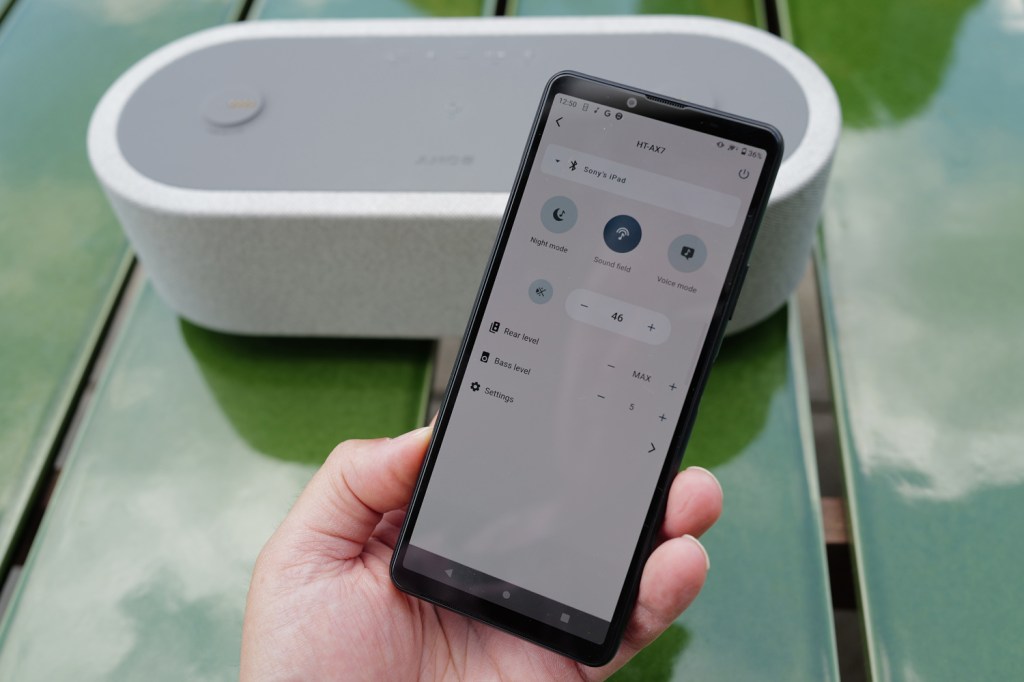
The HT-AX7 is the second bit of Sony kit to use the firm’s Home Entertainment Connect app, which until now only supported the HT-S2000 soundbar. You’ll need to keep any existing apps if you have other Sony kit, as there’s no word about support for older devices being added at a later date.
It’s a straightforward app, with just a few basic controls. Night mode strips out a lot of bass so as not to wake the neighbours, voice mode boosts vocal frequencies to make any muffled movies that bit easier to hear, and the all-important Sound Field button enables Sony’s custom 360 Spatial Sound upmixing. There’s also an overall volume slider, customisable bass level, and second volume control for the rear satellites.
The app will also walk you through initial setup. But as the main unit has physical buttons for the major functions, we reckon it’ll mainly come in handy when you can’t be bothered to get off the sofa to tweak the volume.
Sound quality: made for movies
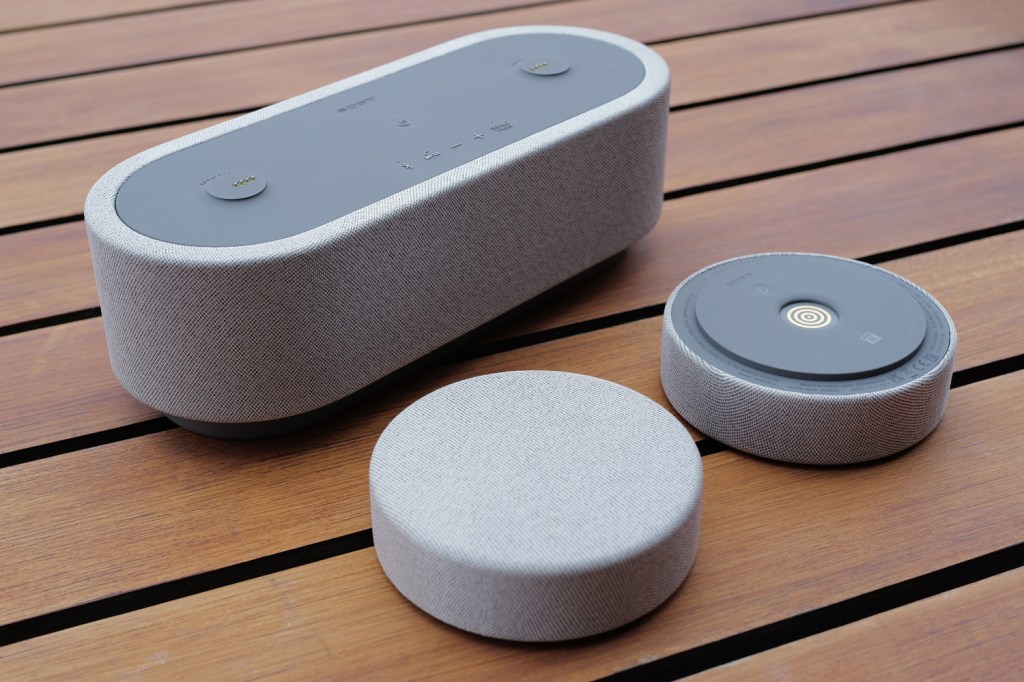
Firstly, we can’t argue with the significant volume boost the HT-AX7 brings over any smartphone, laptop or tablet. The main unit puts out a warm, engaging sound with an ample helping of bass given its size, but not so much it drowns out the rest of the mix. Vocals sounded clear, and the satellites helped add some crunch to higher-end frequencies.
You’ve got two ways to listen. A press of the Sound Field button turns on 360 Spatial Sound mapping, which splits the incoming stereo signal to multiple channels, then sends them to the main unit and both satellites. Why doesn’t it need to measure your room’s audio characteristics or rely on bouncing sound off your walls or ceiling? Because it’s meant for solo use, so the satellites are only ever going to be a foot or two away from your head.
We thought it was very convincing for movies. Background sound effects were largely moved to the rear, while speech was always piped to the main unit. It created a much wider soundscape than you’d get from any single-unit speaker for the same kind of cash. The best bit is it works with any content, from any source – not just Netflix and Prime video, but YouTube and other streaming services.
The satellites talk to the main speaker over a proprietary wireless connection, so there’s no lag or delay between them. Sony has done well to reduce latency between the speaker and your device, too: while James Bond’s Aston Martin was being riddled with bullets in a clip from No Time to Die, we couldn’t spot any gap between seeing each impact and hearing it.
Turn off Spatial Sound and an untouched stereo signal is sent to each speaker for an even sound field. Sony reckons it’s ideal for background music when your mates come to visit, and is the mode we’d use for listening to music. We found the upmixing effects were much more subtle when listening to footage of a Harry Styles live performance, with the location of backing singers and certain instruments being a bit vague as they came from behind and above us.
There’s no LDAC Bluetooth on board, which is a bit of a surprise given Sony champions the tech on its flagship phones including the Xperia 1 V, but that’s because it’s primarily aimed at video addicts wanting spatial sound. Audiophile music lovers will probably stick to headphones for personal listening.
Sony HT-AX7 initial verdict
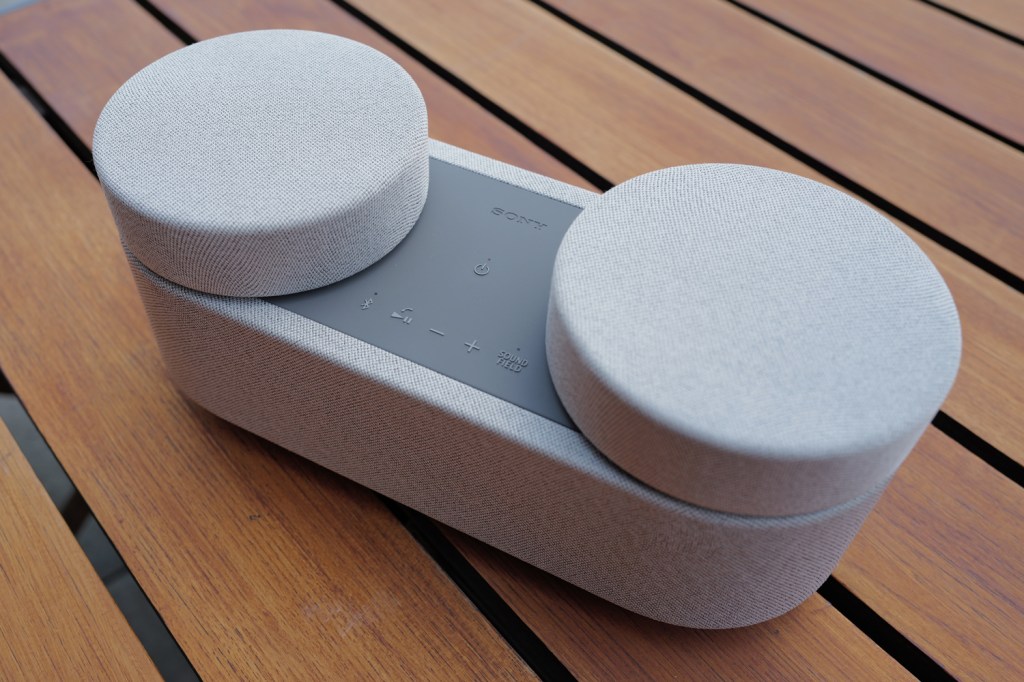
At €550/£499 (we’re still waiting to learn a US amount) the HT-AX7 is admittedly a pricey purchase, and the spatial upscaling won’t match a true surround sound setup for accurate positional audio – but to get even close to that with content streamed from a smartphone is unique in the tech world. And when there’s more than one of you, it’s a rather tidy multi-speaker Bluetooth boombox too.
Does your phone, tablet or laptop take up most of your screen time? Then the HT-AX7 could be a sound investment. It’s easy on the eye, delivers impactful audio, and can make solo viewing much more engaging. We reckon it’s too big for foreign travel (unless you pack seriously light) but could be perfect for college dorm rooms – or just kicking back at home somewhere other than in front of the TV.
